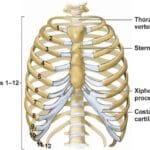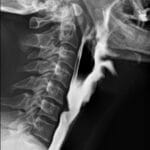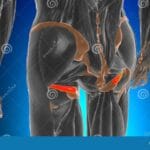Left rib pain can range from a mild ache to a sharp, debilitating sensation. Understanding its potential causes and how it’s classified using ICD-10 codes is crucial for effective diagnosis and treatment. This comprehensive guide will explore the various reasons behind left rib pain, the relevant ICD-10 codes, and when to seek immediate medical attention.
Decoding the Ache: What Causes Left Rib Pain?
Left rib pain can stem from a surprisingly wide range of issues, spanning musculoskeletal, gastrointestinal, cardiac, and pulmonary systems. Pinpointing the exact cause often requires a detailed medical evaluation.
Musculoskeletal Causes
- Intercostal Muscle Strain (R07.82): This common cause involves strained muscles between the ribs. The pain is often sharp and localized, worsening with movement or deep breaths. For more information about related anatomical structures, you can find more information here and you can go here.
- Costochondritis: Inflammation of the cartilage connecting the ribs to the breastbone can cause localized chest pain and tenderness.
- Rib Fractures (S22.-): A fractured rib causes intense pain, especially with movement and breathing.
- Slipping Rib Syndrome (M94.0): This less common condition occurs when the cartilage connecting the ribs becomes loose or unstable.
Gastrointestinal Causes
While less frequent, gastrointestinal issues can sometimes manifest as left rib pain.
- Irritable Bowel Syndrome (IBS): IBS can cause a range of abdominal discomfort, sometimes radiating to the rib cage.
- Pancreatic Problems: Inflammation of the pancreas can cause pain that may be felt in the left upper abdomen and back, sometimes extending to the ribs.
Cardiac and Pulmonary Causes
Although less likely to be the primary cause of isolated left rib pain, cardiac and pulmonary conditions should always be considered, especially if accompanied by other concerning symptoms.
- Pleurisy (R07.81): Inflammation of the lining around the lungs (pleura) can cause sharp, stabbing pain, often worse with breathing.
- Pneumonia: Lung infections can cause chest pain, along with coughing, fever, and shortness of breath.
- Heart Conditions: While severe chest pain radiating to the left arm or jaw is a classic heart attack symptom, some cardiac issues might present with less dramatic rib pain. It’s crucial to seek immediate medical attention if you suspect a cardiac issue.
Understanding ICD-10 Codes for Left Rib Pain
ICD-10 codes are essential for classifying diseases and conditions, ensuring accurate medical documentation and facilitating communication among healthcare providers and insurance companies. Several ICD-10 codes may be relevant depending on the specific cause of left rib pain.
Common ICD-10 Codes
- R07.82 (Intercostal Pain): This code is often used for pain originating from the muscles and nerves between the ribs. It’s a billable code, meaning it’s specific enough for insurance purposes, and is valid for HIPAA-covered transactions from October 1, 2024, to September 30, 2025.
- R07.81 (Pleurodynia): This code is specific to pleurisy, a condition characterized by inflammation of the lining surrounding the lungs.
- R07.89 (Other Chest Pain): This broader code is sometimes used when a more specific diagnosis isn’t immediately clear, requiring further investigation.
- M94.0 (Slipping Rib Syndrome): This code is specific to the condition where cartilage attaching the ribs to the breastbone becomes loose.
- M94.12 (Costochondritis): This code specifically addresses inflammation of the cartilage connecting ribs to the sternum.
- S22.- (Rib Fracture): This category encompasses various rib fracture types, requiring further specification based on the location and nature of the fracture. For example, S22.41 identifies a displaced fracture of the eighth rib.
- S29.9XXA (Rib Injury): This code captures rib injuries like bruises or contusions without fracture.
Why Accurate Coding Matters
Accurate ICD-10 coding is essential for:
- Insurance Reimbursement: Proper coding ensures smooth processing of insurance claims and reduces the likelihood of denials.
- Data Tracking and Research: ICD-10 codes help track public health trends and facilitate medical research.
- Effective Communication: Using the correct codes ensures clear communication among healthcare professionals, leading to better coordinated care.
When to Seek Immediate Medical Attention
While most cases of left rib pain are not life-threatening, some symptoms warrant immediate medical attention:
- Sudden, Severe Chest Pain: This could signal a heart attack or other serious condition.
- Shortness of Breath: Difficulty breathing accompanying rib pain could indicate a lung problem.
- Dizziness or Lightheadedness: These symptoms, combined with chest pain, may suggest a cardiac or pulmonary issue.
- Pain Radiating to Arm, Jaw, or Back: This classic heart attack symptom should never be ignored.
- Persistent Pain Unresponsive to Rest or Over-the-Counter Pain Relievers: This suggests a need for further medical evaluation.
The Importance of a Comprehensive Medical Evaluation
This article provides a general overview, but it’s crucial to consult with a healthcare professional for any rib pain. They can conduct a thorough examination, order necessary tests, and provide a personalized diagnosis and treatment plan. Their expertise ensures the correct ICD-10 code is assigned, facilitating proper documentation, insurance processing, and ultimately, effective management of your left rib pain. Remember, ongoing research continues to refine our understanding of rib pain and its causes, so staying informed and consulting with your doctor is the best approach for optimal care.















